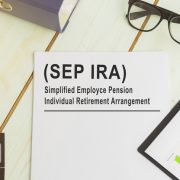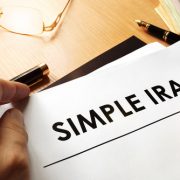Self-Directed Solo 401(k)s, Self-Directed SEP IRAs and Self-Directed SIMPLE IRAs – Which is Right for You?
Generally, small business owners and contractors have three choices when it comes to choosing an employer-sponsored defined business retirement plan: The 401(k), which most people are familiar with, the Self-Directed SEP IRA (Simplified Employee Pension) and the Self-Directed SIMPLE IRA. Each of these account types allows you to set aside much more money on a tax-advantaged basis than you can using an IRA or Self-Directed IRA alone, and each of them, when set up properly, supports self-directed investing.
Each of them may also qualify for a tax credit worth up to $1,500 for newly-established retirement accounts. This tax credit can help you offset start-up costs over the first three years of a plan.
But there are important differences between them, as well. You should be aware of them before opening an account: The best plan for you depends on your situation and your plans for expanding the company.
Self-Directed Solo 401(k)s
The Self-Directed Solo 401(k) is a stripped-down version of the 401(k) plan specifically designed for small businesses with no full-time employees other than the owner and a spouse. It’s simpler to establish and sponsor than a full-fledged 401(k) and requires less paperwork.
The 401(k) or self-directed 401(k) allows employees – including the owner-employee of the company – to set aside up to $19,000 per year as of 2019. Note that with a Self-Directed Solo 401(k) the only employees should be the owner, or a married couple that owns the business.
Catch-up contributions: Those age 50 and older can set aside an extra $6,000 for a total of $25,000 per year.
Total employee contributions must be less than or equal to the employee’s total compensation for the year.
The real kicker comes in the allowable employer contributions. The company can also contribute money along with the employee’s up to a statutory maximum total contribution of $56,000 as of 2019 ($62,000 for participants age 50 and older.)
The 401(k) allows the plan sponsor to include a Roth option. Roth employee contributions are not pre-tax, but assets in a Roth account within a 401(k) can grow tax-free and are not subject to required minimum distributions. Self-Directed SEP IRAs and Self-Directed SIMPLE IRAs do not allow for a Roth option.
401(k) plans can also be set up to allow for employee loans. Self-Directed SEP IRAs and Self-Directed SIMPLE IRAs do not allow loans.
The Self-Directed Solo 401(k) can be a great option for independent contractors and small businesses with no full-time employees other than owners. However, if business expands and you want to hire a full-time employee, you may have to change your plan. If you are planning on hiring anytime soon, you may want to go with a Self-Directed SIMPLE IRA or a Self-Directed SEP IRA.
Self-Directed SEP IRA (Simplified Employee Pension)
A Self-Directed SEP IRA is funded entirely the employer. Unlike 401(k) plans and Self-Directed SIMPLE IRA plans, SEPs do not allow employee contributions.
Employer contributions are a deductible business expense. The 2019 overall cap on contributions per employee, including owner-employees, is $56,000, or 25% of compensation, whichever is less. There are no catch-up contribution provisions.
Contributions are generally capped at 25% of total compensation for each employee, though for self-employed contractors will have to account for the effects of self-employment tax, which may effectively cap contributions at 20% of compensation for these individuals.
If you have employees, you must treat all qualifying employees the same under the plan. You cannot set up the plan and then contribute to owner accounts without contributing to those of non-owner employees. Generally, this means you have to contribute the same percentage of salary/compensation to each eligible employee. The dollar amounts may be different, but the percentage must be the same for owners, managers and rank-and-file employees.
Contributions are not mandatory, but if the company does make contributions, they have to contribute to the plans of all eligible employees.
Self-Directed SIMPLE IRAs
SIMPLE stands for Savings Incentive Match Plan for Employees. It’s a type of defined contribution plan designed for smaller companies with 100 employees or less. To start a SIMPLE, the company cannot have any other retirement plan in place.
Establishing a Self-Directed SIMPLE IRA is much simpler than establishing a full-fledged 401(k). Employees contribute money pre-tax via payroll deduction, similar to a 401(k) plan. Employee contributions are capped at $13,000 in 2019 ($16,000 for employees age 50 and older), and the employer must provide a matching contribution as follows:
- A matching contribution equal to 3% of compensation, (not limited by the annual compensation limit), or;
- 2% nonelective contribution for each eligible employee
- Under the “nonelective” contribution formula, even if an eligible employee doesn’t contribute to his or her Self-Directed SIMPLE IRA, that employee must still receive an employer contribution to his or her SIMPLE IRA equal to 2% of his or her compensation up to the annual limit of $280,000 for 2019(subject to cost-of-living adjustments in later years).
Employee contributions are voluntary. Matching contributions are vested to the employee immediately. However, there is a steep 25% penalty on amounts withdrawn by employees within the first two years of participation (10% on early withdrawals thereafter).
There are no provisions for Roth accounts at present within Self-Directed SIMPLE IRA plans, and they don’t allow loans to plan participants.
Self-Directed Retirement Investing
Each of these plans supports self-directed investing, provided you set the account up with an administrator such as American IRA, LLC or a custodian that is set up to do so. This allows you to look beyond run-of-the-mill broker-sold investments like stocks, bonds and mutual funds, and allows you to invest directly into things like real estate, apartments, precious metals, private lending and mortgages, LLCs, partnerships and many other types of investing.
This may help you achieve higher returns, greater diversification among asset classes, or both, as you work to fund a secure retirement for yourself and your family.
Interested in learning more about Self-Directed IRAs? Contact American IRA, LLC at 866-7500-IRA (472) for a free consultation. Download our free guides or visit us online at www.AmericanIRA.com.










